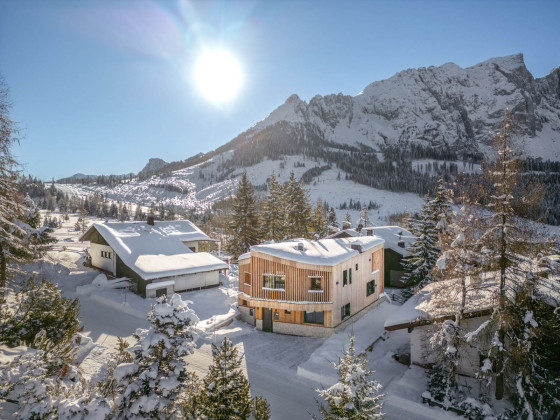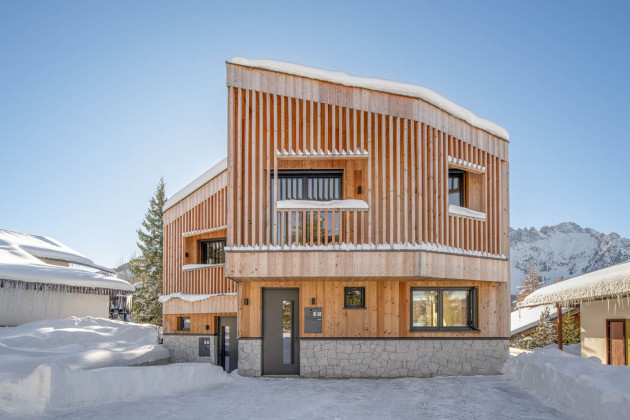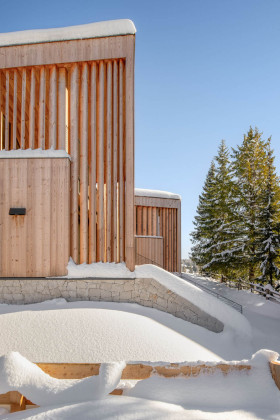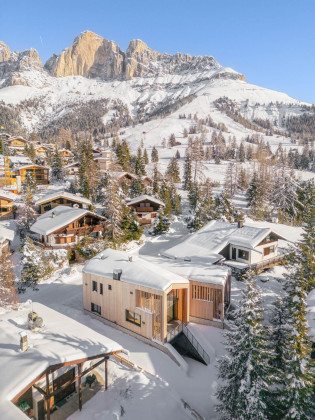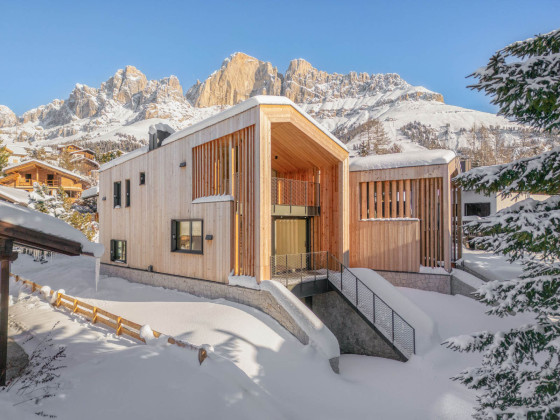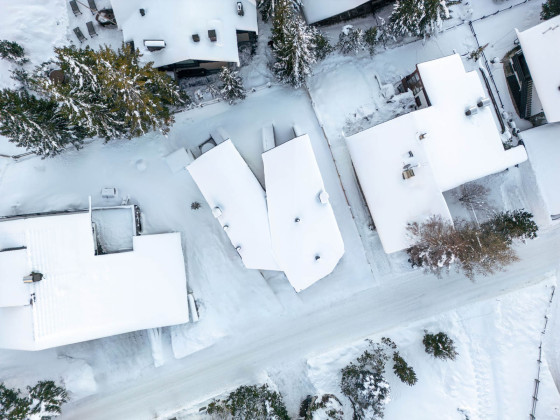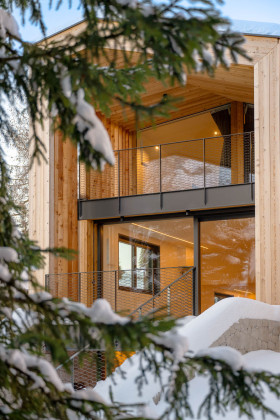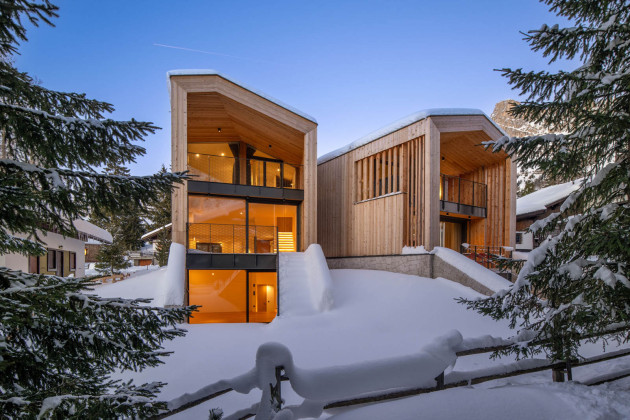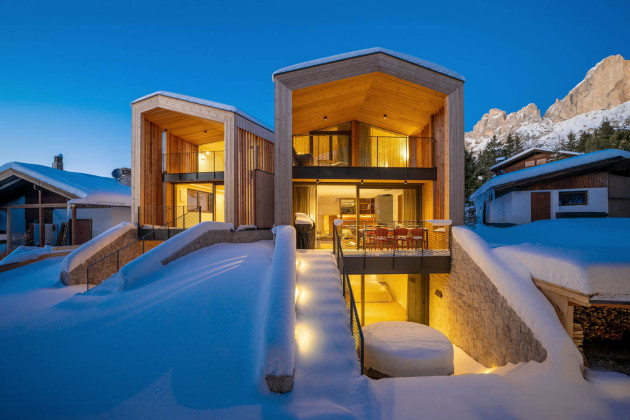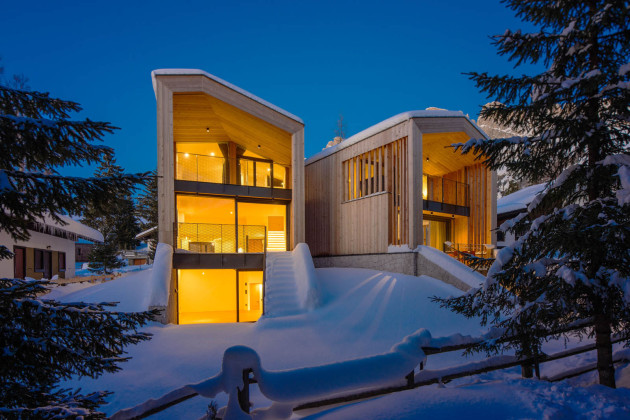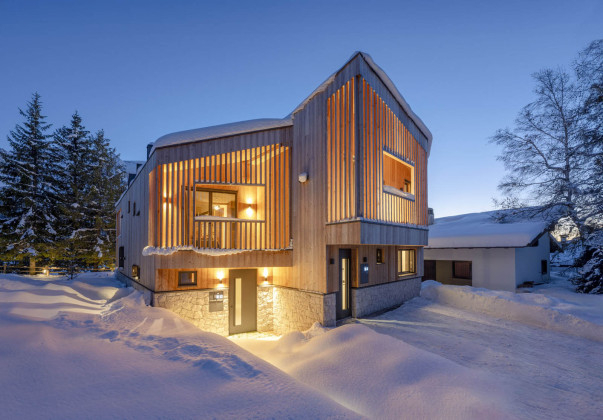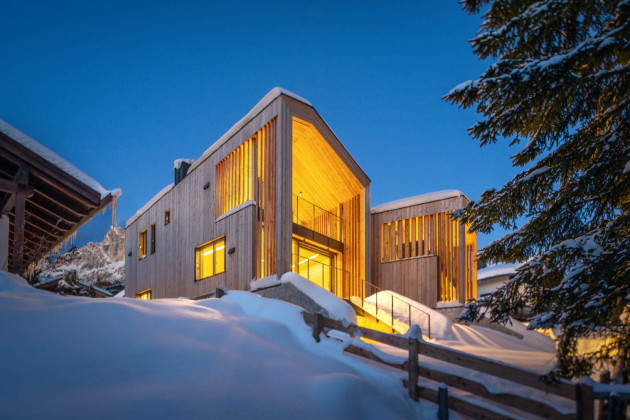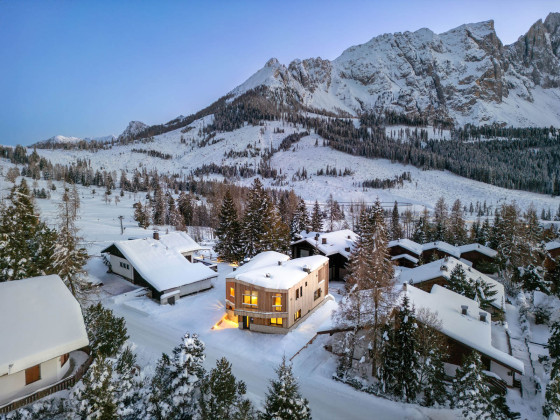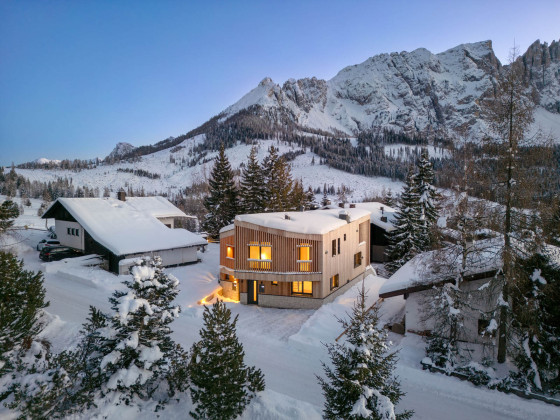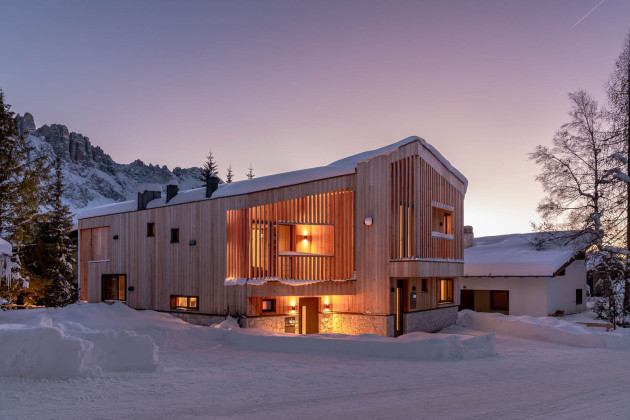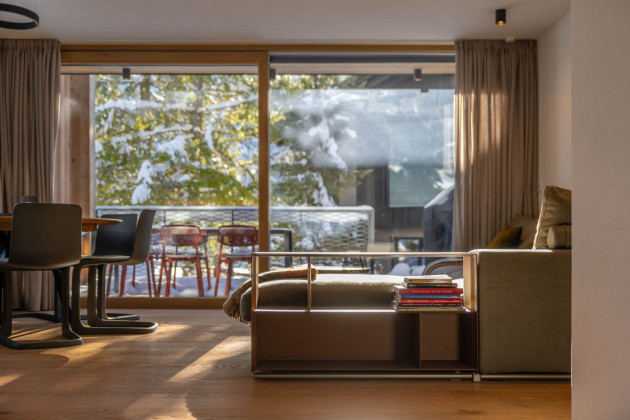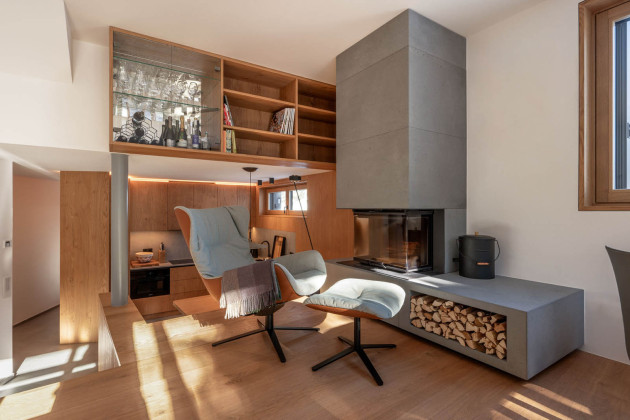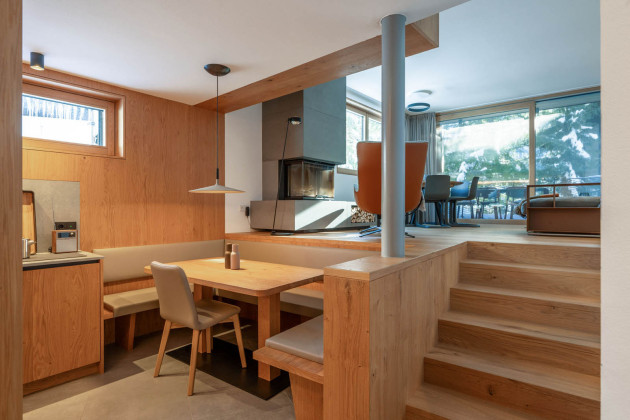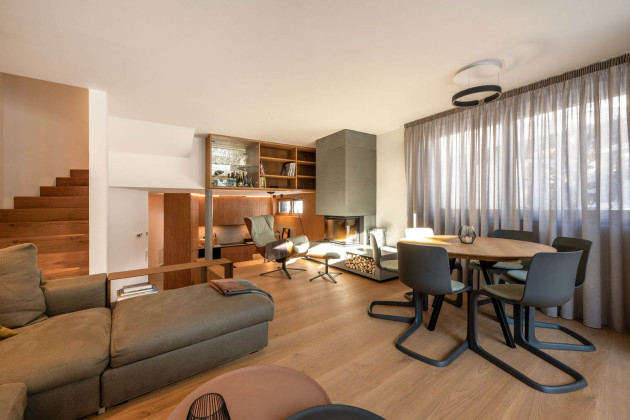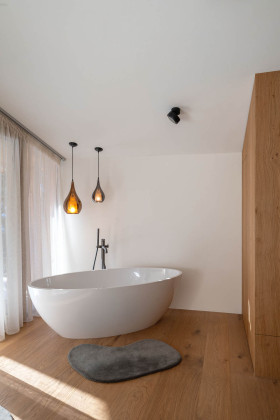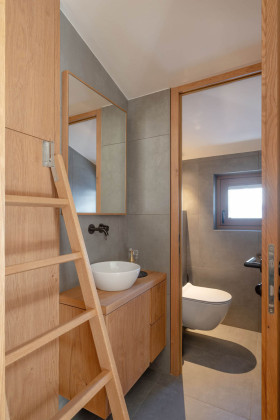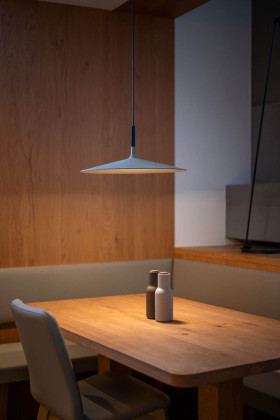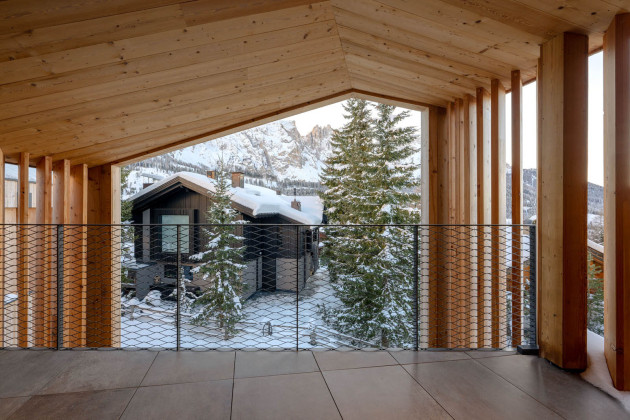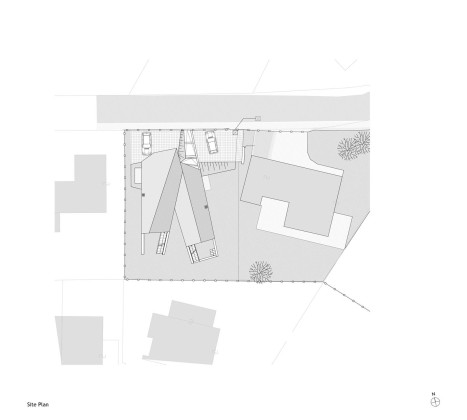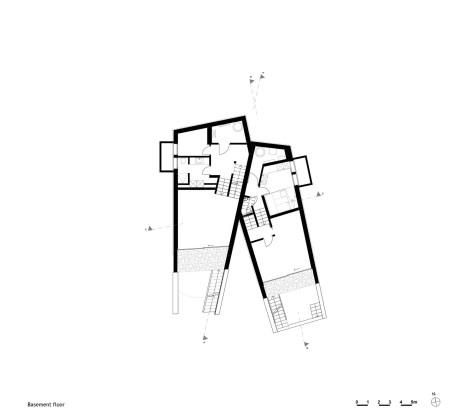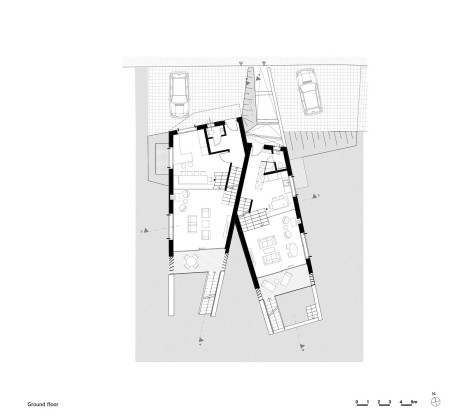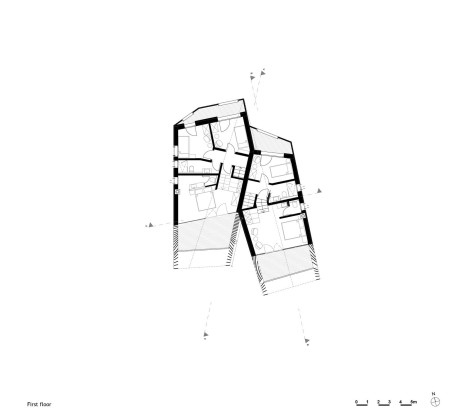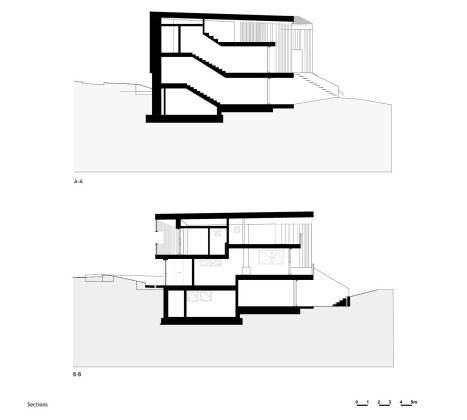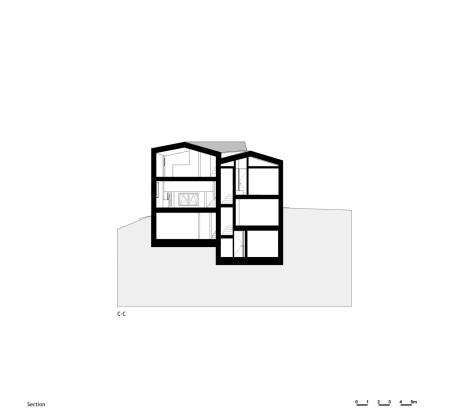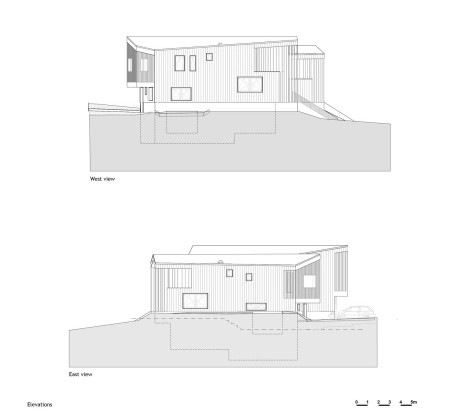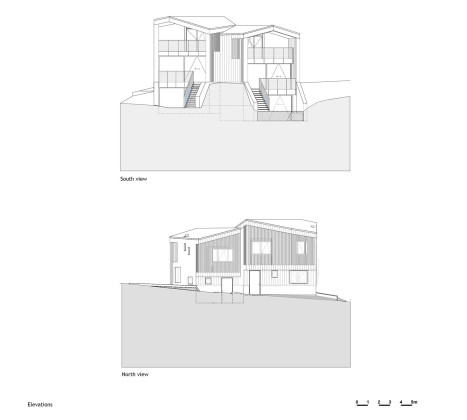House Carezza
Designed by monovolume architecture + design, House Carezza is located in South Tyrol, Italy. The office describes the project as follows:
Not far from Lake Carezza, in the Eggental valley, surrounded by lush larch forests and rugged peaks, lies House Carezza. The landscape here is a true paradise: The colours of the lake and the light of dusk are reflected on the surrounding peaks, offering breathtaking sunsets. The two new wooden houses translate the alpine architectural tradition of farmhouses into the present by combining materials such as wood and stone with modern technologies and reinterpreting the material separation between the upper and lower parts that is characteristic of this type of building.
From above, you can see the asymmetrical roof geometry, which is reminiscent of the rough, fragmented materiality of rocks. The homes are built in an area of high building density: in order to preserve the privacy of the residents, the north side of the building facing the Rosengarten is enclosed by large terraces and characterised by a vertical rhythm of wooden slats. The south side, on the other hand, opens up the view of the panorama of the Latemar Group with its glass façade. On the façade, an expressive and clear separating line divides the building: the upper part is made of fir wood, the lower part of dolomite rock.
The building is certified with KlimaHouse A Nature. Among other things, materials from the surrounding area were chosen for the construction: the loadbearing structure is made of spruce wood, the cladding and interior fittings are made of weather-resistant larch wood, and stone from the area was used for the exterior.
Inside, the three floors are staggered so that the view of the panorama is guaranteed at all times. On the ground floor, each flat consists of an entrance area, the kitchen, the living room and a wardrobe. On the upper floor, the large panoramic windows look directly onto the Dolomites. The room layout and furnishings convey a timeless, alpine atmosphere: as on the outside, the use of wood continues on the inside, and natural light enters through gaps in the walls.
The result is a balance between intimacy and cosiness, typical of Alpine charm that evokes familiarity and allows guests to experience traditions in a vast landscape.
 08.04.2024
08.04.2024



